Introduction
A cash flow statement is a vital tool in financial reporting that tracks the movement of cash in and out of a company during a specific period. It offers a clear snapshot of a company's financial health by detailing income from various sources and expenses that deplete funds. Understanding cash flow is essential for businesses of all sizes, as it is the lifeblood that enables day-to-day operations, strategic investments, and growth aspirations.
This article explores the importance of cash flow management, techniques for cash flow forecasting, strategies to optimize cash inflows and reduce outflows, effective working capital management, negotiating favorable payment terms, utilizing technology for cash flow management, common challenges in cash flow optimization, and strategies for effective cash flow optimization. By delving into case studies and real-world examples, readers gain insights into successful cash flow optimization strategies and the critical role it plays in the longevity and prosperity of a business.
Understanding Cash Flow Statements
A cash flow statement, an indispensable component of financial reporting, captures the essence of a company's financial vitality by tracking the cash entering and leaving during a set timeframe. At its core, it is a clear ledger detailing income from various streams—such as direct earnings, passive income from investments, and side ventures—and expenditures that regularly deplete funds, including necessities and discretionary spending.
The framework of a cash flow statement is intuitive: income and expenses at the top, followed by assets and liabilities. It is a visual representation, as championed by Robert Kiyosaki in his seminal work 'Rich Dad, Poor Dad', that simplifies financial complexities into a snapshot, illustrating the trajectory of funds and the financial health of an individual or business.
The practicality of this statement is its division into clear segments, each offering insights into different aspects of business operations. Operating activities take precedence as they concentrate on the cash flow directly linked to the company's main business functions. This section accounts for sales revenue, operational expenses, and modifications for non-cash elements, such as depreciation, while also reflecting changes in working capital elements like receivables and payables.
The pertinence of cash flow extends beyond mere accounting; it forms the beating heart of any business, large or small. It's the lifeblood that enables day-to-day operations, strategic investments, and growth aspirations. A positive and growing cash flow is indicative of a company's capacity to exceed its costs and invest in its future, while a negative flow can signal impending financial distress, potentially leading to business failure despite an outward appearance of success.
Understanding the distinction between cash flow and profit is critical for business longevity. Profit reflects the financial gain after all expenses have been subtracted from total revenue, whereas cash flow represents the net amount of cash being transferred into and out of a business. Mastery of cash flow management is essential; it's about recognizing the financial rhythm of the business and devising strategies to maintain equilibrium, ensuring that the company can weather the ebb and flow of its fiscal cycle without succumbing to cash shortages.
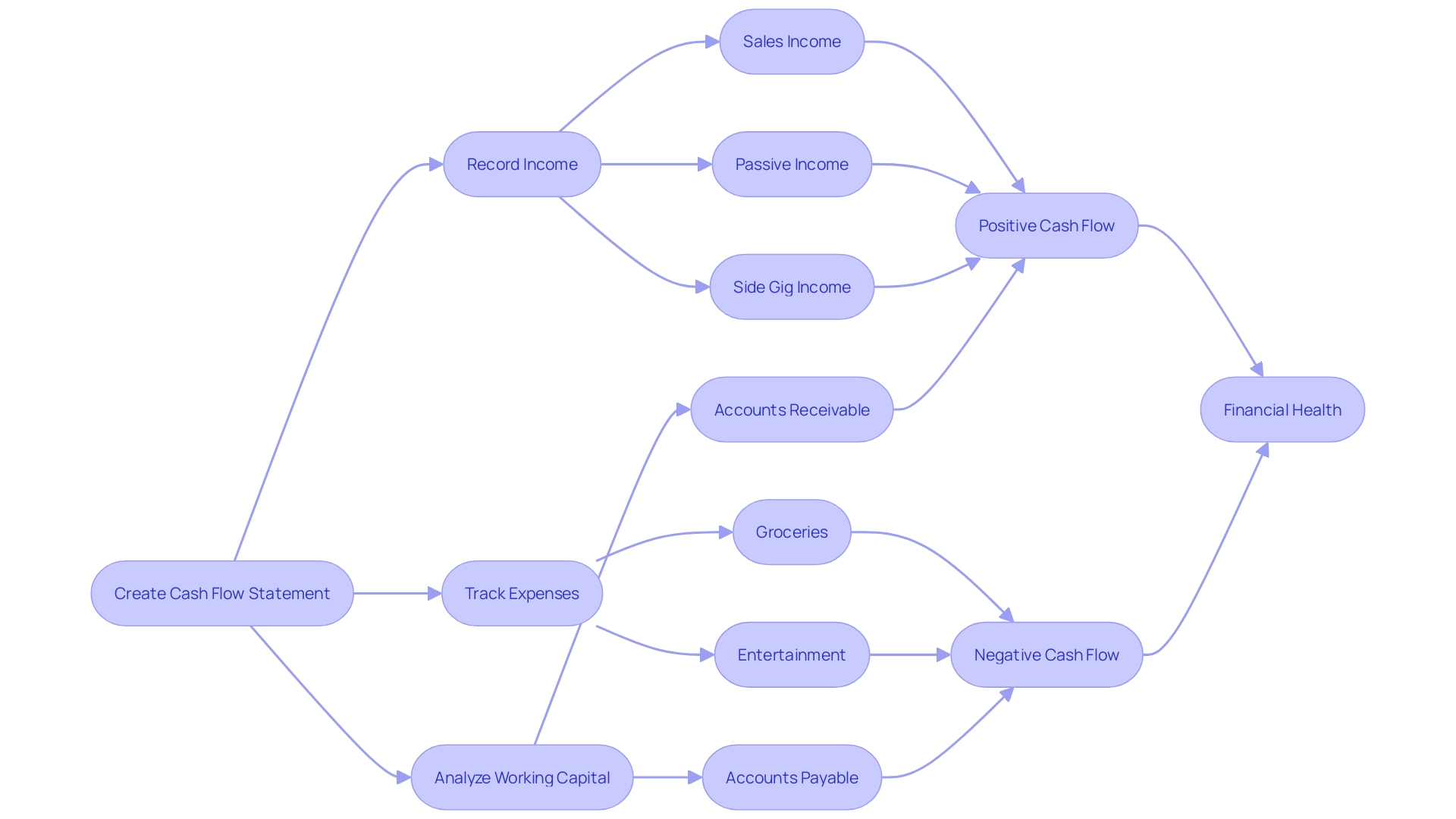
The Importance of Cash Flow Management
Mastering cash flow is essential for the vitality and longevity of any business, whether it's an emerging eCommerce platform or a seasoned consulting firm. The art of cash flow management is to anticipate and plan for the financial currents and undercurrents, making certain that there's always sufficient liquidity to fulfill the company's commitments. It's a balancing act between the predictable revenue streams and the inevitable expenditures.
For instance, an eCommerce store may enjoy low initial costs and rapid transactions, but it must also anticipate and mitigate the risk of cash shortages to sustain operations. Similarly, consultants may enjoy the benefit of regular clientele, yet they must astutely manage their cash flow to ensure uninterrupted business continuity.
Understanding the distinction between cash flow and profit is crucial. Profit is the surplus after expenses are deducted from revenue, while cash flow is the actual cash that flows in and out of the business. A healthy cash flow enables a company to cover its expenses, invest strategically, and scale over time.
Without diligent cash flow management, even a profitable company can face dire consequences if it can't pay its employees, suppliers, or rent.
The statistics speak as well: value maximization should be the North Star for businesses, guiding investment decisions and financial strategies. While profits might be deferred in the pursuit of growth, ensuring a sustainable cash flow is non-negotiable. After all, cash is the lifeblood of a business, keeping it alive and thriving.
Cash Flow Forecasting Techniques
Mastering cash flow forecasting is a crucial skill for any business, as it provides a predictive glance into the financial future, enabling businesses to plan for both abundance and scarcity in their cash reserves. By analyzing the inflows and outflows of cash, companies can strategize around potential shortfalls or allocate surplus funds efficiently. With the right approach, businesses can mitigate risks, capitalize on opportunities, and ensure operational continuity.
The core of a robust cash flow forecast lies in understanding the main components of a cash flow statement, which includes operating activities, investing activities, and financing activities. For instance, operating activities detail the cash transactions that are the direct result of business operations, such as sales revenue and operating expenses. These are critical as they reflect the company's ability to generate cash through its core business model.
It's essential to note that cash flow is not synonymous with profit. While profit measures the financial gain, cash flow represents the actual movement of money in and out of the business. A profitable business can still encounter cash flow problems if its cash timings are misaligned.
As a result, diligent cash flow management is indispensable in averting financial crises and ensuring the business can cover its expenses and invest in growth opportunities.
Real-world examples underscore the importance of cash flow management. For instance, eCommerce stores, with their lower overhead costs and global reach, can maintain a healthy cash flow by managing inventory and receivables effectively. Similarly, consulting services can achieve steady cash flow through ongoing client engagements and predictable payment structures.
Statistics in corporate finance underscore the significance of cash flow. Companies with growth potential may prioritize scaling over immediate profits to maximize future value, illustrating the strategic use of cash flow forecasts in decision-making processes. This strategic approach is essential for businesses to thrive in a competitive market, where cash flow management can make the difference between success and failure.
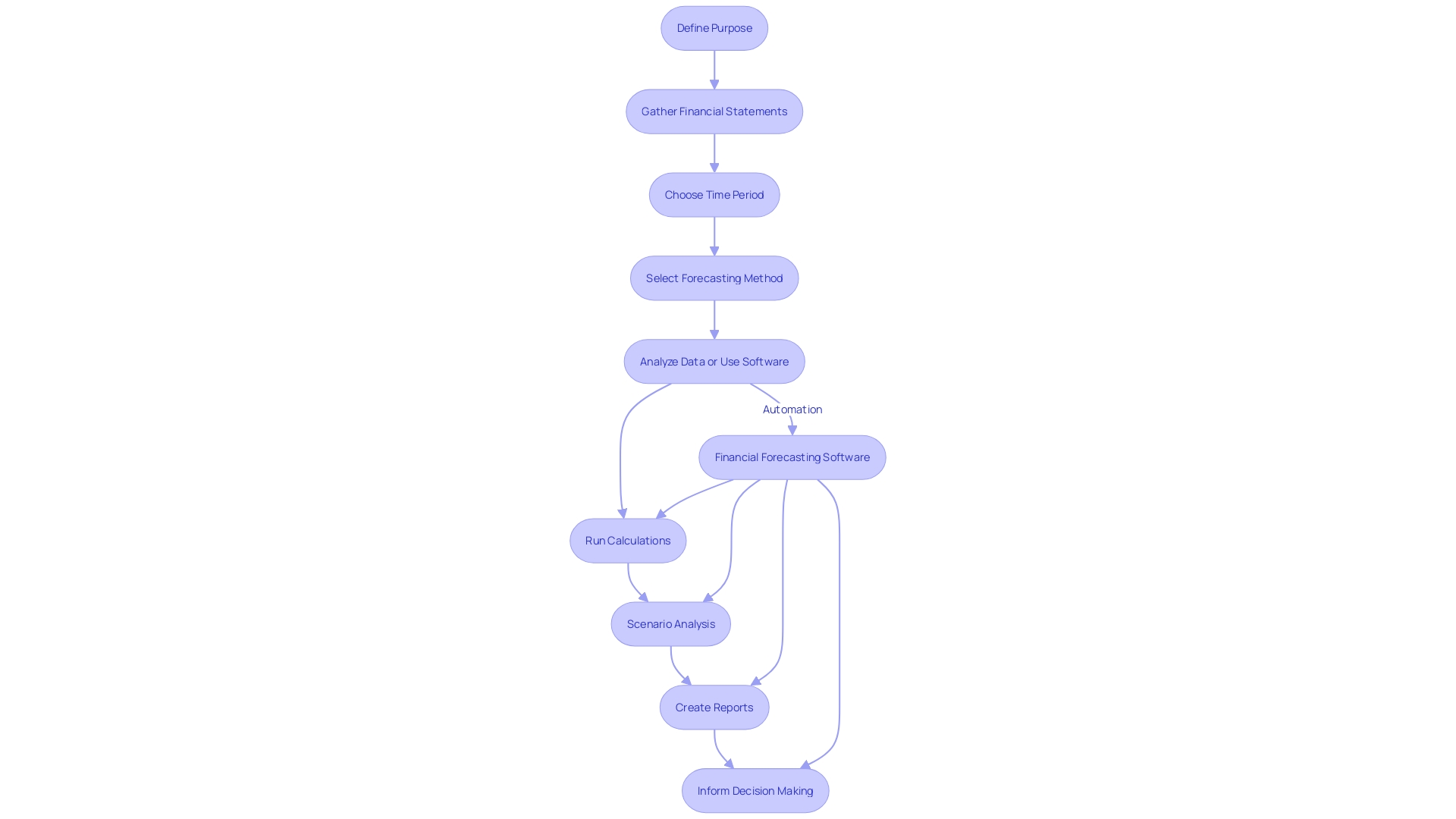
Optimizing Cash Inflows
To bolster cash inflows, businesses must harness innovative strategies that go beyond traditional sales and marketing enhancement. Take the case of Travel Charme Strandhotel Bansin, a family-friendly hotel that capitalized on peak demand periods and optimized occupancy through strategic marketing and customer experience enhancement. Moreover, the expansion into new markets, as seen with Holiday Extras, further underscores the potential of exploring new revenue streams to solidify financial inflows.
Additionally, the adoption of technology and data-driven solutions can streamline operations and improve financial performance.
For instance, an eCommerce platform provides an avenue for low overhead costs and access to a global market, while consulting services offer flexibility and the potential for stable, ongoing client relationships. Similarly, companies like Holiday Extras have embraced data fluency, empowering their teams to harness insights that drive customer engagement and operational efficiency.
A robust cash flow model, therefore, should incorporate an analytical approach to sales data, aligning with KPIs that reflect the business's health and growth opportunities. This entails leveraging sales forecasting and data trends to make informed decisions that optimize cash flow. The integration of clear goals and relevant metrics, supported by reliable data management tools and expertise, ensures that businesses can efficiently convert data into actionable strategies, ultimately boosting financial inflows and sustaining business growth.
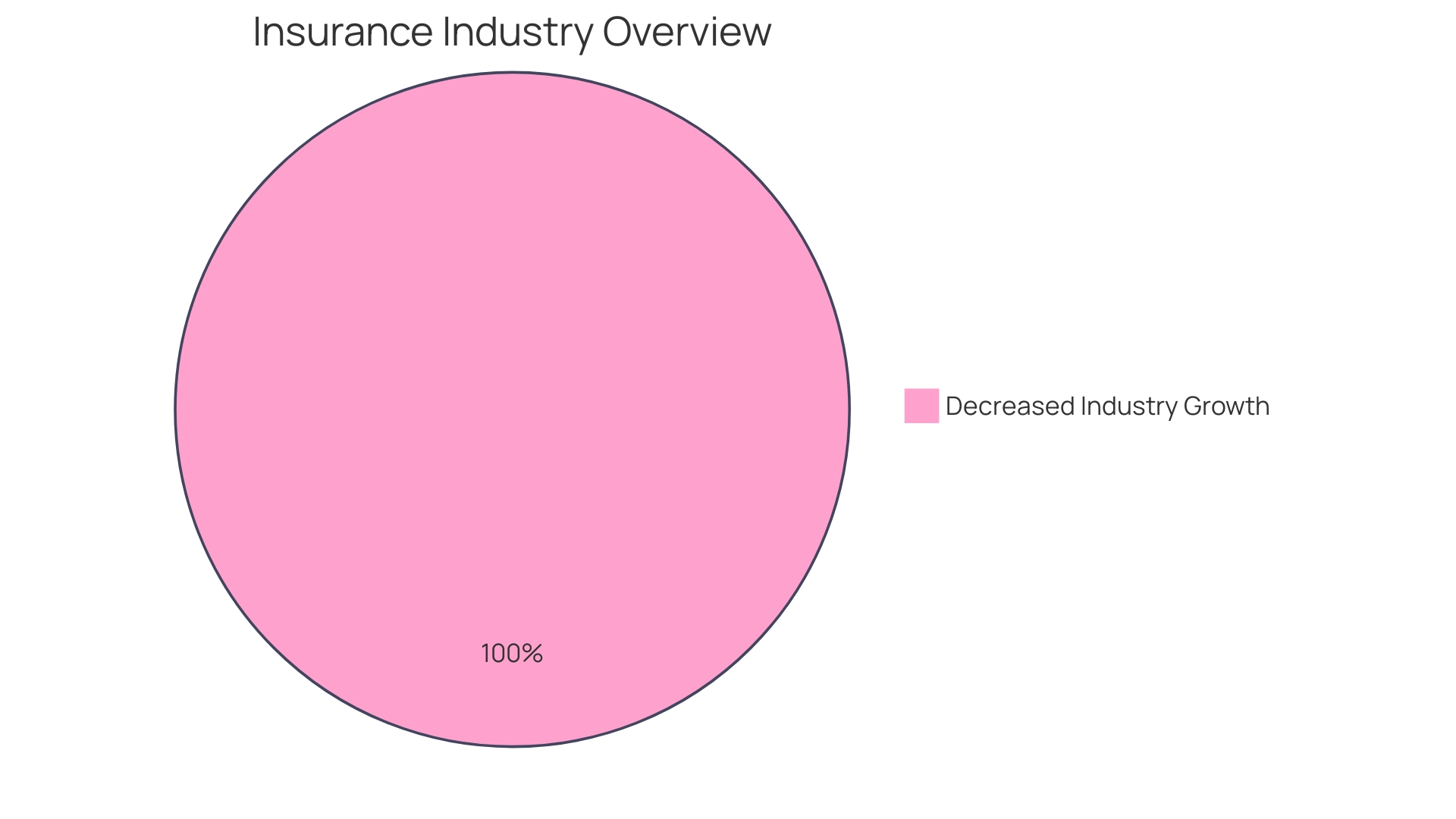
Reducing Cash Outflows
Optimizing cash flow is essential for maintaining a healthy business. To reduce cash outflows, consider inventive strategies such as adopting a fixed-price model like the "prix fixe" approach in the restaurant industry. This strategy provides customers with predictable costs while streamlining your service offerings.
Additionally, a focus on efficiency can lead to significant savings, similar to Delivery Hero, which revamped its IT account recovery to save 35 minutes per incident, cumulatively freeing up employee time and reducing lost productivity. Examination of expenditures is also crucial. For example, Pacific Steel's reevaluation of health care costs led to a more transparent and cost-effective approach.
In the current economic climate, where 40% of small businesses face inconsistent cash flow and 30% lack reserves for unexpected challenges, it's imperative to scrutinize every outflow. By ensuring low overhead costs, businesses can retain more profit. Remember, cash is the lifeline of a business, and effective management is key to growth and profitability.
With raw material prices and wages rising, two-thirds of businesses anticipate cost-related challenges, highlighting the importance of proactive cash flow management.
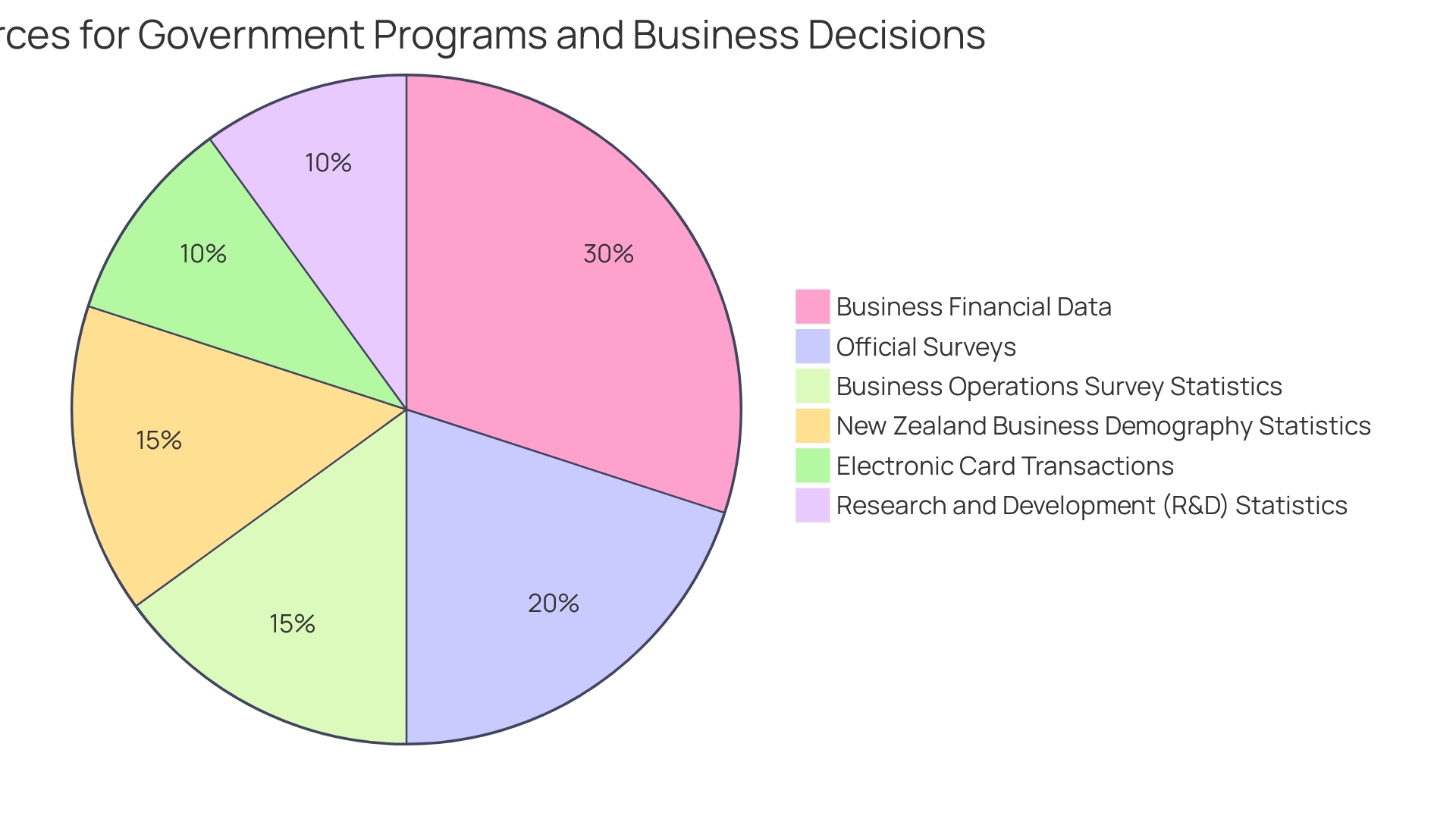
Managing Working Capital
In the rapidly evolving business landscape, savvy management of working capital is more critical than ever. At the heart of this is the strategic oversight of short-term assets and liabilities, which is essential for maintaining a robust cash flow. Effective handling of inventory, coupled with the astute management of accounts receivable and payable, can result in an efficient cash conversion cycle, which is paramount for operational success.
This approach is underscored by the fact that almost half (42%) of SMEs in key sectors such as agriculture and manufacturing still rely on manual processes for cash flow management, which can lead to significant challenges, including delays in invoicing and payments.
Indeed, according to a recent comprehensive study spanning from March to June 2023, working capital loans remain a vital financial tool for growth corporates in Europe, particularly in the fleet and mobility sector, where 40% of firms prefer them over other solutions. Moreover, a report highlights that a majority of businesses (60%) face ongoing hurdles in cash flow management, with nearly a fifth struggling to track expenses and revenue accurately.
The key to navigating such complexities lies in a methodical approach to contract negotiations, as illustrated by a large U.S. firm with over 70,000 associates. By first identifying contract variables, then prioritizing them based on each party's needs, and finally collaborating on tailored solutions, businesses can enhance financial discipline and drive mutual benefits.
Furthermore, the movement of cash in and out of a business—the essence of cash flow—is a delicate balance that must be maintained to prevent any cash shortages that could spell disaster for any company. Continuous monitoring and optimization of cash flow are not merely beneficial practices but are imperative for the sustainability and growth of a business.
The integration of new software to improve productivity, better manage data, and create efficiencies is being increasingly recognized as a valuable investment, with 32% of businesses citing productivity improvement as a primary reason for technology adoption. As real estate stocks reel under rate hikes and regional banks face intense scrutiny, the importance of robust cash flow management cannot be overstated, serving as a lifeline for businesses to thrive amidst financial pressures and uncertainties.

Improving Accounts Receivable and Accounts Payable
Refining the processes involved in managing accounts receivable and payables is a key strategy for boosting cash flow, which is crucial for any business to maintain financial health and growth. Streamlining invoicing practices and enhancing payment collection efficiency can ensure faster revenue realization. For example, a firm that adopted a 'prix fixe' model, offering a fixed selection of technology and services, saw a heightened efficiency in their operations.
Similarly, negotiating more favorable payment terms with both customers and suppliers can significantly alleviate cash flow pressure by aligning cash outflows with inflows.
In practice, an effective accounts payable clerk plays a pivotal role in managing expenses and ensuring financial compliance. Their ability to process invoices accurately and promptly is essential for maintaining vendor relationships and controlling costs. Additionally, by reevaluating all expenditures, businesses can pinpoint critical areas for financial optimization without hastily resorting to cost cuts, which may impact long-term growth objectives.
The impact of such improvements is not limited to small scale operations; it scales up to global companies as well. For instance, Delivery Hero, a global delivery platform, tackled an operational inefficiency by streamlining their IT service delivery, which previously saw significant time spent on account recovery processes. By addressing this bottleneck, they saved 200 hours monthly, illustrating the ripple effect of process optimization on overall productivity and financial performance.
The importance of cash flow management cannot be overstated, as it is the lifeblood of any business. Effective cash flow management involves a strategic approach to understanding the inflows and outflows of cash, ensuring that the business can cover its expenses, invest strategically, and grow sustainably. Without a healthy cash balance, even the most promising companies can face dire consequences.
This understanding is echoed in recent studies, such as Deloitte's MarginPLUS survey, which highlights a trend towards targeted, strategic actions to improve financial outcomes, supported by emerging technologies like generative artificial intelligence (GenAI).
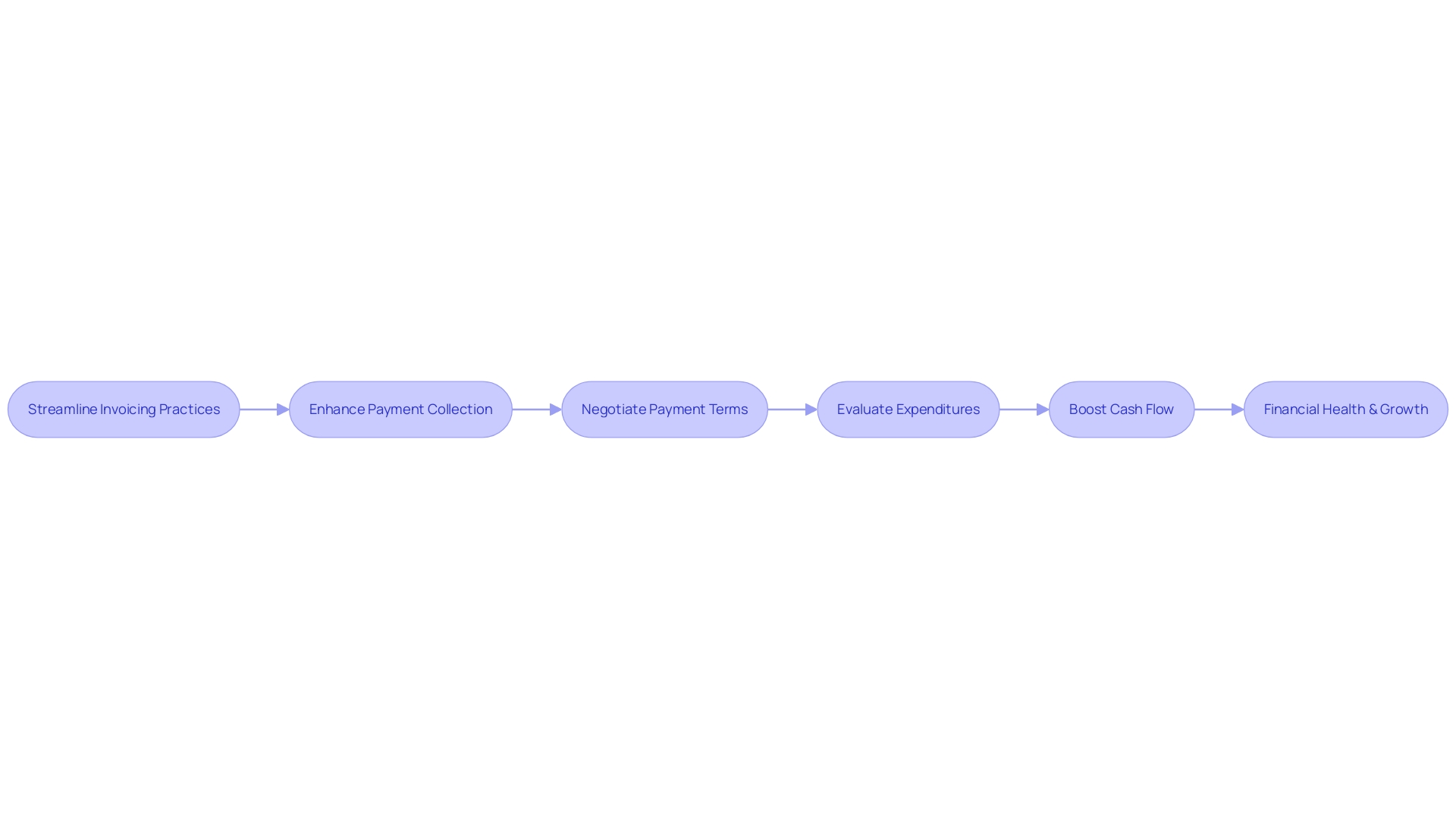
Streamlining Inventory Management
To optimize cash flow, companies must refine their inventory management strategies, ensuring they maintain ideal inventory levels while minimizing carrying costs. This approach not only improves inventory turnover but also liberates capital previously immobilized by surplus stock. For instance, the automotive industry's shift towards electric vehicles has necessitated rethinking their financial focus, with inventory as a crucial component of net working capital.
Reducing product complexity and the number of unique components directly impacts inventory levels, promoting a more streamlined supply chain.
In the hospitality sector, Travel Charme Hotels & Resorts employed technology to enhance their operations. Specifically, the Travel Charme Strandhotel streamlined processes, resulting in more efficient service delivery and inventory management. By utilizing advanced systems, they can now better cater to peak demand periods without the burden of excessive inventory.
Furthermore, effective cash flow management is pivotal for business sustainability. A comprehensive strategy should be in place to anticipate and manage the natural fluctuations of cash within a business, as a shortage of funds can be detrimental to any enterprise. Inventory control systems, particularly in the food and beverage industry, provide critical tracking of lots and batches, enabling businesses to manage expiration dates and respond quickly in the event of recalls.
Ultimately, the goal is to create a 'cash culture' by strategically planning for future cash needs, rather than making incremental improvements to existing performance. By employing techniques such as demand forecasting and analyzing replenishment processes, businesses can maintain an optimal inventory level that supports a robust cash flow system.
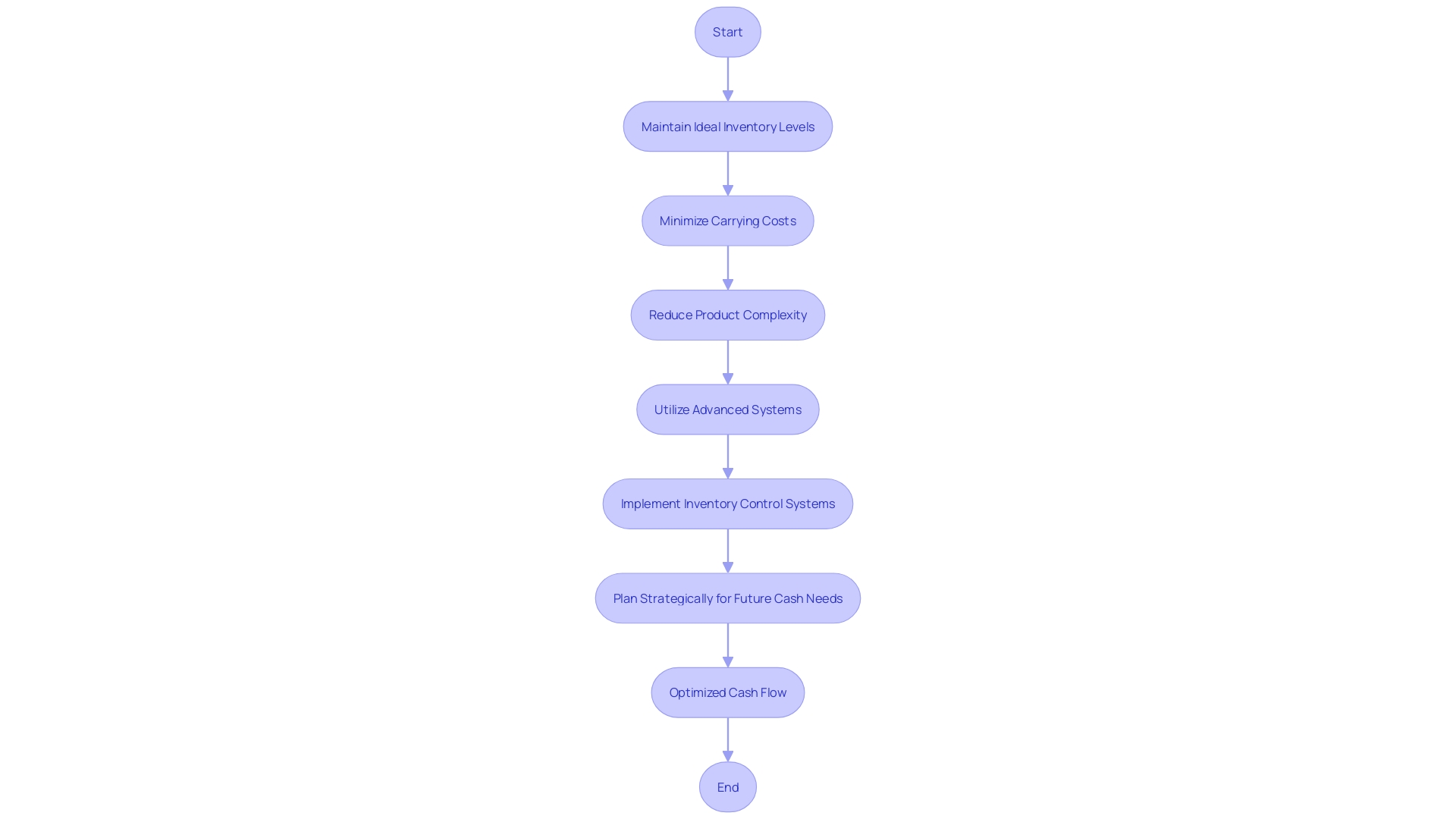
Negotiating Favorable Payment Terms
Strategic negotiation of payment terms with suppliers plays a crucial role in optimizing cash flow. Engaging in data-driven negotiations can lead to agreements that benefit both parties, such as extended payment terms or advantageous early payment discounts. This practice not only helps in managing cash outflows effectively but also bolsters the company's financial health.
For instance, supply chain finance arrangements allow businesses to partner with financial institutions, which in turn pay suppliers upfront, granting the business extended repayment terms. Similarly, purchase order financing can provide a lifeline for businesses lacking a robust financial history by paying suppliers based on the value of customer orders, thus safeguarding cash flow prior to invoicing.
It's vital to understand the distinction between cash flow and profit. While profit is an indicator of overall financial success, cash flow is the lifeblood of daily operations. A healthy cash flow ensures that businesses can meet their obligations and avoid cash shortages, which can be catastrophic regardless of profitability.
By fostering transparent communication with vendors and establishing a collaborative relationship, businesses can ensure that payment terms are met while also exploring additional opportunities for cost savings. Moreover, incorporating a total cost of ownership analysis into negotiations can unearth both tangible and intangible costs, leading to a more profound understanding of value and providing leverage in discussions. Ultimately, these strategies can lead to improved cash flow management and a stronger financial standing.
Utilizing Technology for Cash Flow Management
A real-world example of how technology revolutionizes cash flow management can be seen at the Travel Charme Strandhotel Bansin. With a hundred rooms and a capacity for 250 guests nightly, the hotel experiences high demand, particularly during vacation periods. The integration of advanced software has been pivotal in automating financial operations, allowing for real-time monitoring of cash flows and thereby providing the management with actionable insights to make informed financial decisions.
In the hospitality industry, where customer satisfaction and operational efficiency are paramount, the ability to access immediate financial data translates into enhanced service delivery and optimized resource allocation. The Travel Charme Strandhotel Bansin, recognized for its excellence in service, leverages technology to ensure a seamless guest experience while maintaining financial health.
Moreover, the broader business landscape reflects a significant shift towards technological adoption. A study indicates that 42% of small and medium enterprises still rely on manual processes for cash flow management, particularly in industries such as professional services and agriculture. This reliance on spreadsheets and paper records is more prevalent among smaller businesses, highlighting a critical opportunity for increased efficiency through digital solutions.
Businesses that have embraced technology report improvements in operational efficiency, with artificial intelligence playing a key role in diverse applications from customer service to predictive analytics. However, the transition to automated systems is not without its challenges. Many businesses report difficulties with cash flow management, citing delayed invoicing, payment collection, and the management of accounts receivable/payable as common hurdles.
Investing in the right technology, as evidenced by 60% of businesses, can address these challenges by enhancing productivity, improving data management, and creating efficiencies.
This trend is further exemplified by the recent IPO of Arm Holdings, a chip designer essential to the AI transition, which achieved a valuation of over $52 billion, underscoring the market's recognition of the value of technology in today's business landscape.
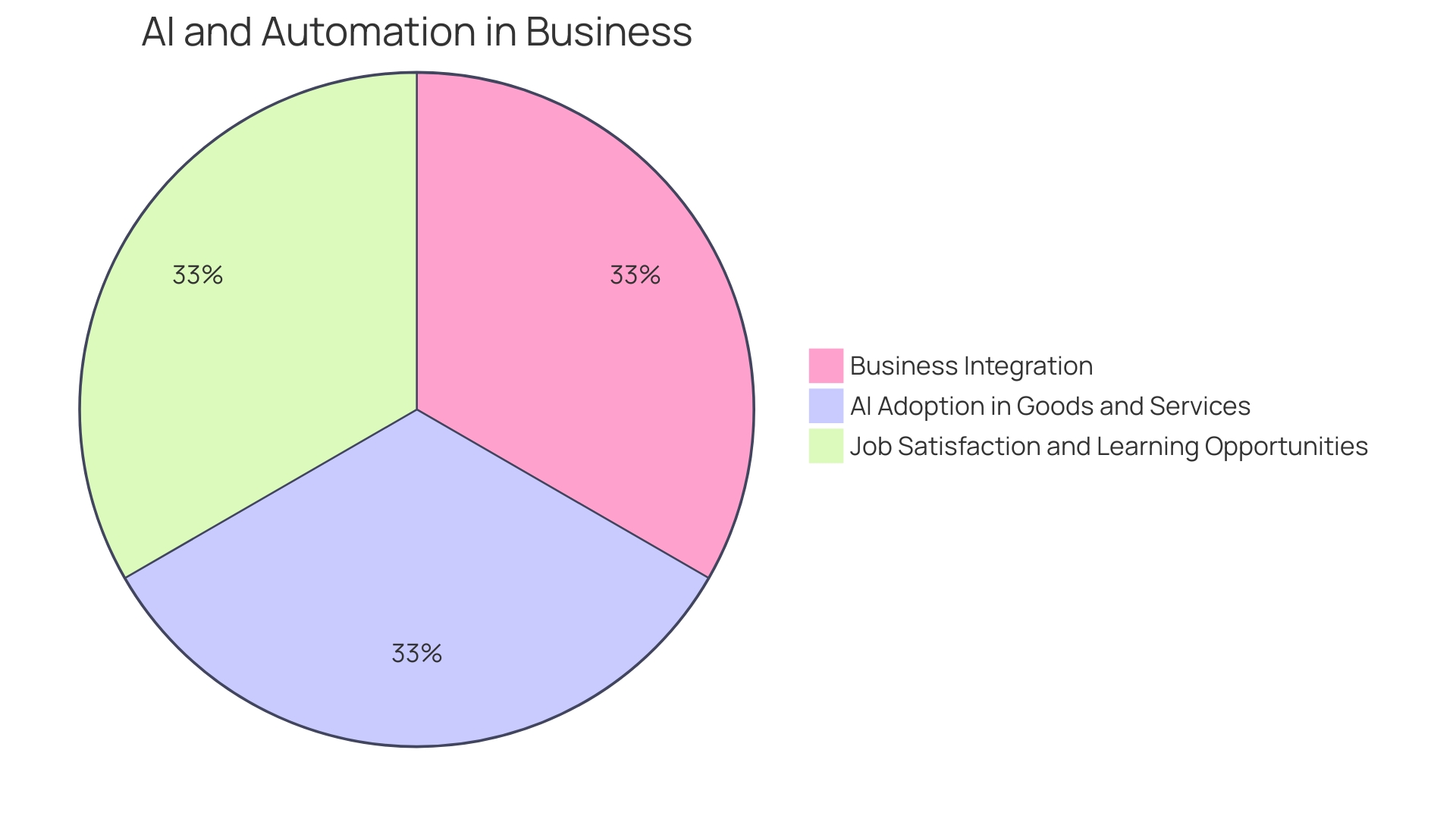
Common Challenges in Cash Flow Optimization
Navigating the complexities of cash flow optimization requires a keen understanding of its challenges, which may include unpredictable market fluctuations, irregular customer payments, and unexpected outlays. For instance, a prominent hotel in the city center faced difficulties enhancing Food & Beverage sales, despite an optimal location. The resolution involved a strategic approach that emphasized understanding the market.
Similarly, in the business realm, cash flow is akin to royalty; its absence can cripple even the most promising ventures. A successful cash flow business often boasts low overhead costs, allowing a larger share of revenue to be retained as profit. Companies must diligently analyze financial statements, including cash flow statements, income statements, and balance sheets, to gain comprehensive insights into their financial health.
Dr. Sharon H. Porter emphasizes the importance of this knowledge for the future success of any business. Meanwhile, cash flow, distinct from profit, signifies the lifeblood of a company, with its continuous movement into and out of the business being vital for sustainability. Leaders must avoid common pitfalls, such as neglecting detailed financial reviews or lacking a strategic plan for fund allocation, to ensure a robust cash flow and avert any potential business downturns.
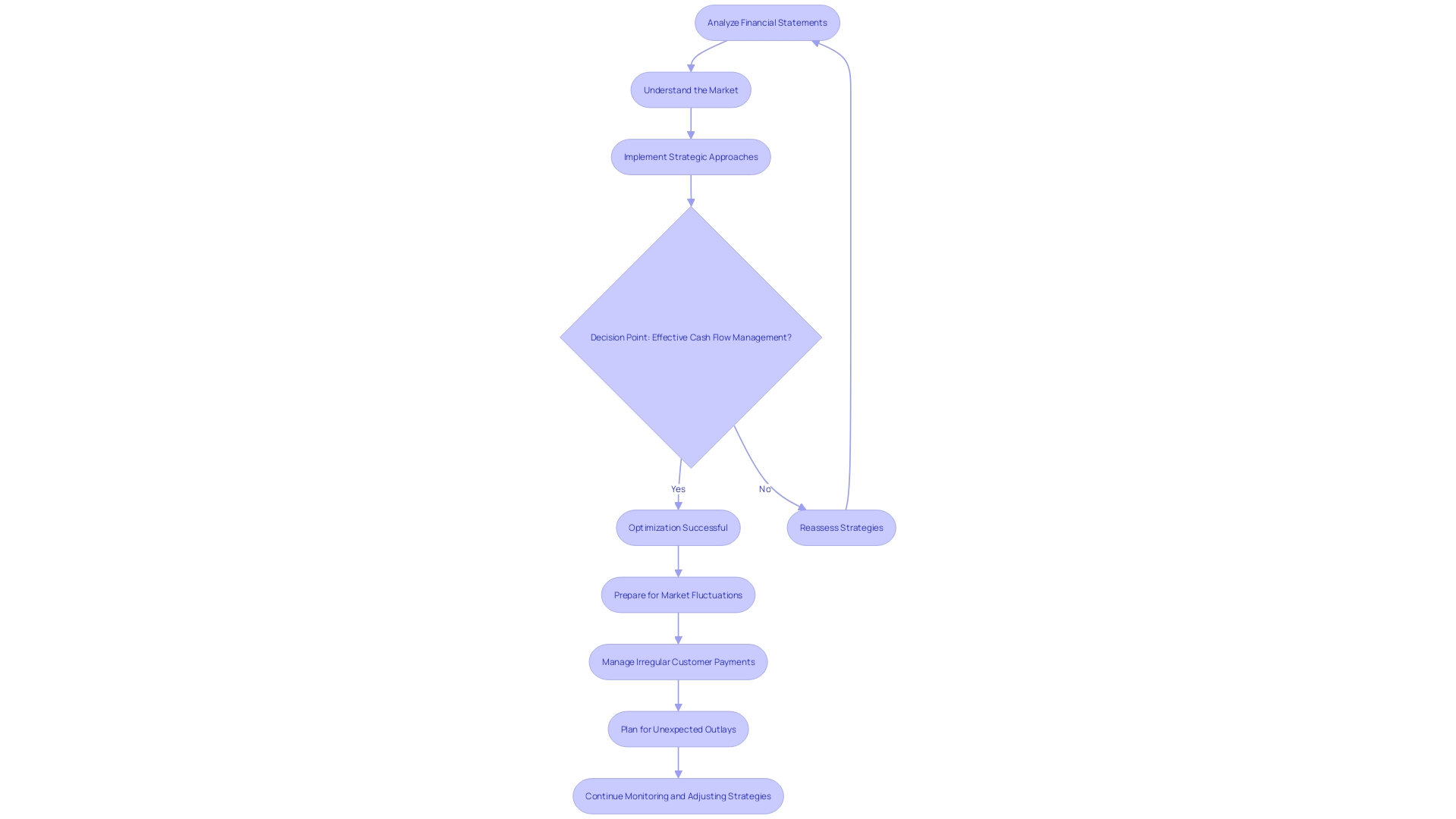
Strategies for Effective Cash Flow Optimization
Tailoring cash flow optimization strategies to the unique requirements of a business is instrumental for financial health. One such strategy is enhancing the precision of cash flow forecasts. With the advent of artificial intelligence (AI) and machine learning, traditional forecasting methods are being outpaced.
AI-driven forecasting not only provides real-time data but also predicts customer behavior and market movements with greater accuracy, leveraging vast amounts of data from social media, web activity, and past purchases.
To further streamline finances, businesses can adopt cost-saving measures with an emphasis on minimizing overhead. As a case in point, businesses with low overhead costs, such as eCommerce stores and consulting services, ensure more revenue is retained as profit. Online stores, for instance, benefit from reduced startup costs and the ability to tap into a worldwide market, simplifying transactions and minimizing fixed costs.
Consulting services, on the other hand, allow for flexible rate setting and often lead to consistent, predictable revenue streams through ongoing client engagements.
Diversification of revenue streams also plays a critical role in cash flow optimization. Exploring new business ideas with high cash flow potential can cushion a company against market volatility. Implementing this strategy could involve launching an eCommerce platform or providing consulting services, which have been recognized for their immediate revenue-generating capabilities and low overhead costs.
Finally, cultivating strong relationships with customers and suppliers is paramount. As Peter Drucker, a renowned management consultant, articulated, 'What gets measured gets managed.' By measuring and managing key performance indicators, businesses can gain invaluable insights into their financial health, operational efficiency, and customer satisfaction.
This proactive approach to relationship management can lead to improved payment terms and more favorable agreements, thereby enhancing cash flow stability.
Each of these strategies, from leveraging AI in forecasting to reducing overhead and diversifying income sources, aligns with the overarching goal of achieving and maintaining a robust cash flow, which is the lifeblood of any successful enterprise.
Case Studies and Examples of Successful Cash Flow Optimization
Delving into real-world success stories can shed light on how companies navigate financial challenges to secure robust cash flow and business health. One such narrative involves a savvy hotel that, despite its prime urban location, struggled with stagnant F&B sales. The hotel's breakthrough came from a strategic pivot that embraced its locale to attract diners, demonstrating the critical importance of market knowledge and a well-executed action plan.
Another case highlights a business's digital transformation, where a thoughtful selection of technical tools like Django and Tailwind, coupled with a deep SEO analysis, led to a surge in sales. This approach underlines the potency of a well-researched and user-centric digital strategy in driving business performance.
Moreover, a comprehensive analysis of a hotel company's challenges with Google Ads revealed the need for a robust foundation. By integrating essential tools such as Google Analytics and targeted PPC campaigns, the company saw a significant uplift in bookings.
Experts reiterate the value of cash flow management, with the adage "Cash is queen" underscoring the necessity of mastering financial currents to ensure a business's longevity and prosperity. In alignment with this, the importance of tracking key performance indicators (KPIs) is evident, as noted by Peter Drucker: "What gets measured gets managed." These real-world experiences and expert insights collectively highlight the intricate dance of strategic planning, market understanding, and diligent financial oversight in steering companies toward success.
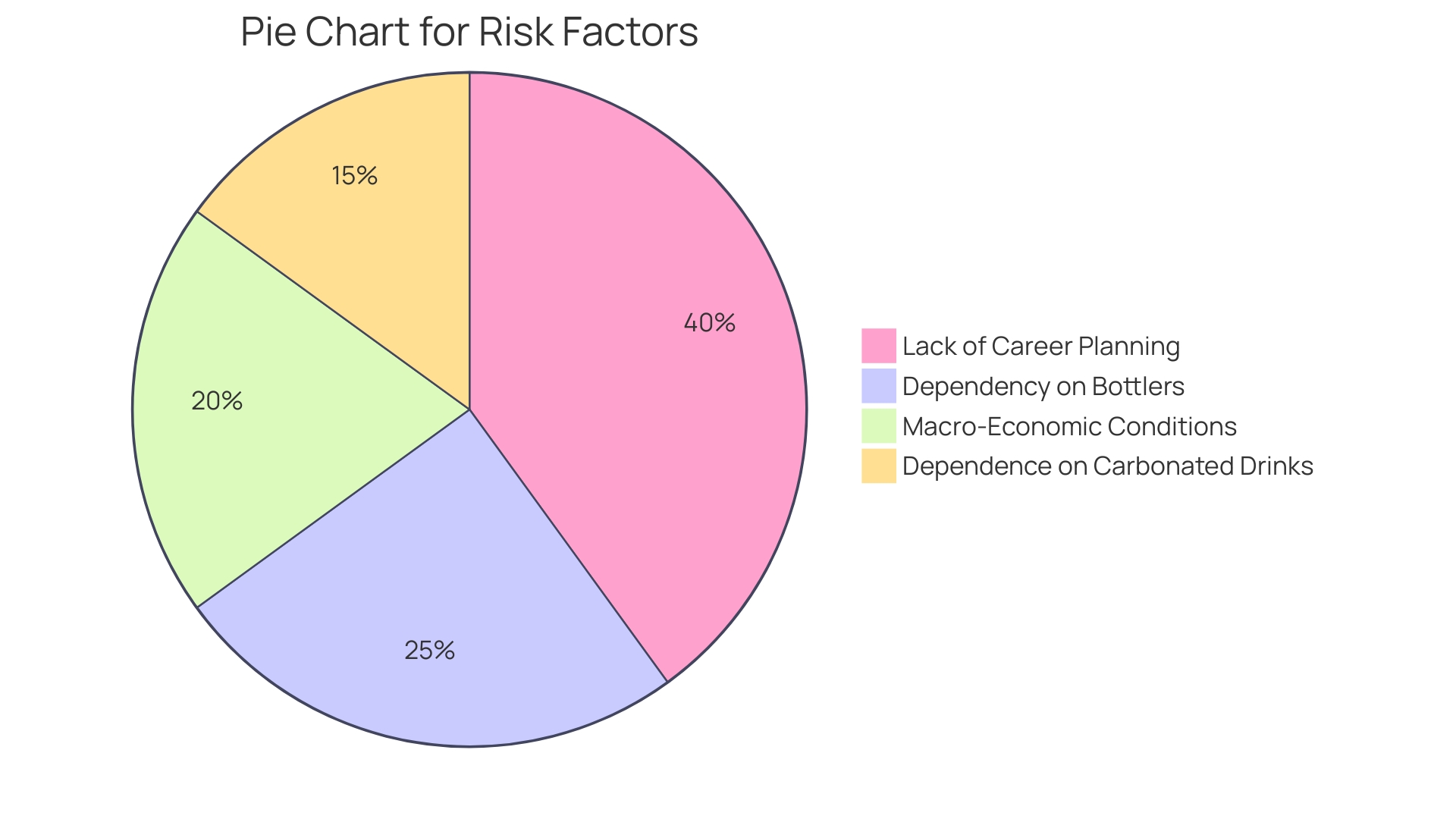
Conclusion
Effective cash flow management is crucial for the vitality and longevity of any business. It enables day-to-day operations, strategic investments, and growth aspirations. By anticipating and planning for financial currents, businesses can ensure sufficient liquidity to fulfill commitments.
Cash flow forecasting provides a predictive glance into the financial future, enabling businesses to plan for abundance and scarcity. Diligent cash flow management is essential to avert financial crises and invest in growth opportunities.
To optimize cash inflows, businesses should explore new revenue streams, adopt technology-driven solutions, and align sales data with key performance indicators (KPIs). Reducing cash outflows requires innovative strategies such as fixed-price models, efficiency focus, and reevaluating expenditures.
Effective management of working capital, including inventory, accounts receivable, and accounts payable, is critical for operational success. Strategic contract negotiations and technology adoption improve cash flow optimization.
Streamlining accounts receivable and payables processes, negotiating favorable payment terms, and leveraging technology enhance cash flow management. Understanding challenges like market fluctuations and irregular payments is key to successful cash flow optimization.
In conclusion, mastering cash flow management is essential for businesses. By employing effective strategies, leveraging technology, and understanding the intricacies of cash flow optimization, businesses can maintain financial health and achieve long-term success.




